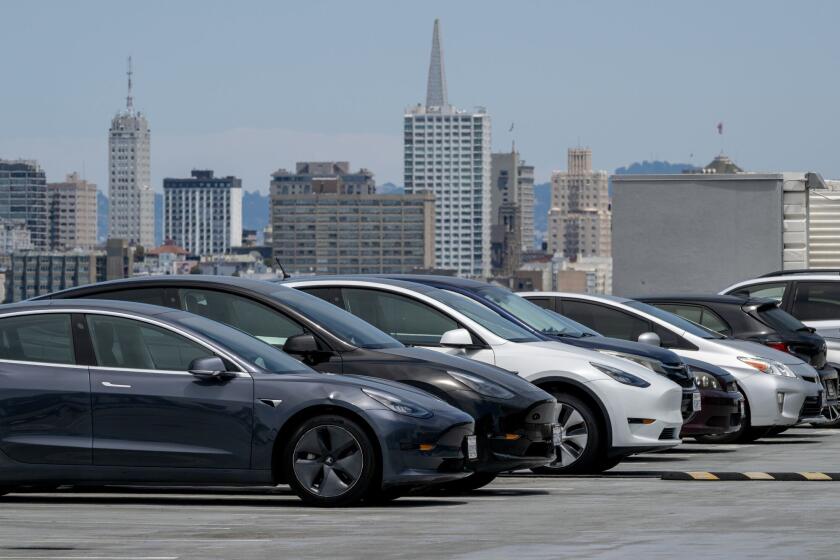High court tempers patent protections
- Share via
WASHINGTON — Patents shouldn’t be ironclad protection for inventors because some inventions aren’t unique, the Supreme Court ruled Monday.
In a pair of decisions, one in a high-profile case that pitted Microsoft Corp. against AT&T; Inc., the court limited the legal rights of inventors and gave judges more flexibility in dealing with patent lawsuits.
“If a company has a portfolio of patents, they’re less valuable today than they were a year ago,” said Dennis Crouch, a visiting law professor at Boston University and author of a popular patent-law blog.
The U.S. patent system has faced criticism for issuing too many dubious patents in response to a flood of applications triggered by the growth of new technologies over the last two decades. At the same time, the computer industry has learned that patents can be more trouble than they are worth.
Laptops and other gadgets can be built on thousands of patented components, and a dispute with one small patent-holder can lead to expensive lawsuits that drive up prices or force products off the market.
“U.S. patent law needs to encourage an innovation environment,” said Mark Chandler, general counsel and senior vice president for Cisco Systems. “Lately it’s been encouraging a litigation environment.”
The Supreme Court has tried to recalibrate the system for the 21st century, largely backing the computer industry’s approach over the more restrictive view of patent-holder rights advocated by pharmaceutical and biotechnology companies. They argue that patents should be strongly protected because a drug can cost billions of dollars to bring to market and usually is based on an exclusive medical advance.
One of Monday’s rulings makes it easier to challenge patents on grounds that they don’t protect truly one-of-its-kind innovations and the other limits the reach of U.S. software patents abroad. In another ruling last year, in a case involving EBay Inc., the high court made it harder for judges to order disputed products off the market.
“All of them reflect a concern at the Supreme Court that the patent system has strayed too far to the side of patent owners,” said Philip Swain, a patent attorney with Foley Hoag in Boston. “They’re trying to push the pendulum back toward the middle.”
Congress is considering major reforms to the patent system as lawsuits have soared in the last decade, threatening popular products such as Research in Motion’s BlackBerry e-mail device.
On Monday, the Supreme Court ruled 6 to 1 that Microsoft didn’t violate AT&T;’s patented digital speech compression technology in Windows software sold overseas. U.S. patents aren’t valid abroad, but a 1984 law prevents companies from circumventing inventors’ rights by simply assembling products in foreign countries from components produced here.
Microsoft argued that its software code wasn’t a physical component, just a series of digital data, and the justices agreed. The decision could dramatically cut damages in patent suits because software companies sell about half their products abroad. The decision could save Microsoft more than $1 billion as it asks courts to review two recent jury awards against it that were based on worldwide sales.
The court’s most significant decision Monday involved a dispute over adjustable automobile gas pedals. Teleflex Inc. of Limerick, Pa., developed the pedal and got a patent. Then its Canadian rival KSR International Co. created a similar pedal. Teleflex sued.
A Michigan court ruled in 2002 that Teleflex’s pedal was just an obvious combination of existing patented components and shouldn’t have been granted a patent in the first place. The U.S. Court of Appeals for the Federal Circuit reversed the decision, saying the Michigan court didn’t follow its strict test for determining when an innovation was “obvious.”
The justices ruled unanimously that the appeals court test was too “narrow” and “rigid” and tossed the suit.
Each invention sets a higher bar, meaning “the results of ordinary innovation” should not receive patent protection, Justice Anthony Kennedy wrote, adding that standards for judging patents should be flexible to accommodate the needs of different industries.







